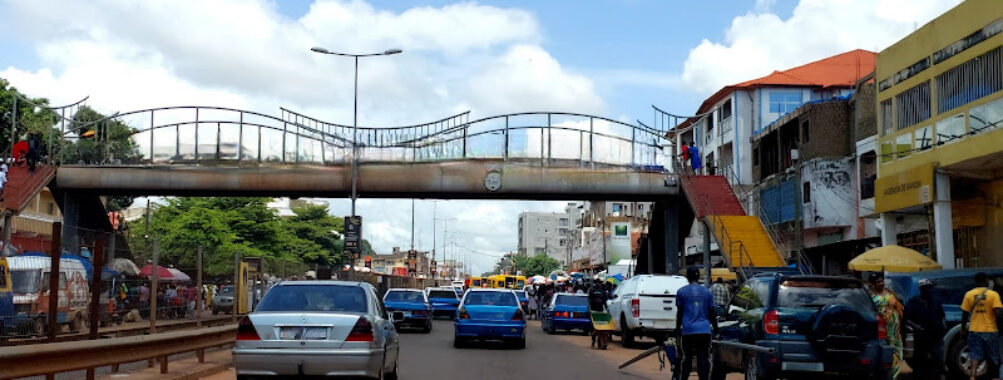
Mercado de Bandim
Table of Contents Mercado de Bandim is one of those places that sneaks up on you — not because it’s hidden, but because it’s so alive that you can’t help but get swept up in its rhythm. Sitting in the heart of Bissau, this sprawling open-air market is the city’s beating pulse, a chaotic yet strangely comforting swirl of colors, sounds, and smells. It’s not fancy, not polished, and definitely not for the faint of heart — but that’s exactly what makes it so unforgettable. Here, you’ll find locals bargaining over piles of mangoes, fishmongers calling out their daily catch, and the occasional goat wandering between the stalls like it owns the place. The market isn’t just a spot to buy groceries — it’s a living, breathing piece of Guinea-Bissau’s culture. And while it can feel a little overwhelming at first, there’s a rhythm to the madness that grows on you the longer you stay. I still remember my first visit, clutching a few crumpled notes and trying to figure out how to ask for change in Creole. Let’s just say I walked away with twice as many bananas as I needed — but also a few smiles and a story to tell. Most of the vendors are friendly and curious about visitors, especially if you take the time to greet them properly. It’s a cash-only market, so leave your cards at your hotel — they won’t do you any good here. The market’s authenticity is its charm: it’s raw, real, and unapologetically local. You’ll see everything from fresh produce and dried fish to handmade baskets, spices, and even second-hand clothes. There’s a certain honesty in how things are done here — no frills, no gimmicks, just honest trade and human connection. What makes Mercado de Bandim stand out isn’t just the goods — it’s the energy. You can actually feel the hum of the city here. It’s the kind of place where you might come in for a few vegetables and leave with a carved wooden spoon, a handful of dried hibiscus, and a new friend who insists you try their cousin’s cashew wine. And yes, it’s a little rough around the edges — some stalls are makeshift, and the ground can get muddy after rain — but that’s part of the experience. It’s real life, unfiltered. If you want to see the market at its most lively, go in the morning. By 8 a.m., the place is already buzzing, and the freshest produce is laid out in neat piles (well, sort of neat). The air smells of roasted peanuts, grilled fish, and that earthy scent you only get after a night of tropical rain. Afternoons tend to be slower, with some vendors packing up before sunset, especially during the rainy season when the weather can change in a heartbeat. Personally, I love visiting on a Saturday — that’s when the market feels like a festival. People come from nearby neighborhoods, music spills from portable radios, and there’s this contagious sense of community. Just keep in mind that weekends can get crowded, so if you’re not a fan of tight spaces, an early weekday morning might suit you better. Getting to Mercado de Bandim is fairly straightforward if you’re staying in or near central Bissau. Most travelers either walk or take a local taxi, known as a “toca-toca,” which is an adventure in itself. Don’t expect meters — you’ll need to negotiate the fare before you hop in. The drivers are usually helpful, and if you mention “Bandim,” they’ll know exactly where to go. Traffic can get a bit chaotic around the market area, especially during peak hours, so patience is key. If you’re up for it, walking gives you a better feel for the city’s rhythm. You’ll pass small shops, kids playing football in the streets, and women balancing baskets on their heads with an elegance I could never pull off. Just keep your belongings close and your curiosity open — it’s all part of the adventure. Visiting Mercado de Bandim is one of those experiences that rewards you the more you lean into it. Here are a few things I’ve learned (sometimes the hard way): And maybe this is just me, but I always like to take a moment to step back and just watch. There’s something oddly beautiful about the rhythm of the market — the way people move, barter, laugh, and live. It’s a reminder that travel isn’t just about seeing new places; it’s about connecting with the heartbeat of a community. Mercado de Bandim gives you that in spades. So, if you’re the kind of traveler who likes things a little raw, a little unpredictable, and a lot authentic, this market should be on your list. Go with an open mind, a sense of humor, and maybe an empty bag — because you’ll definitely want to fill it.Description
Key Features
Best Time to Visit
How to Get There
Tips for Visiting
Location
Places to Stay Near Mercado de Bandim
Find and Book a Tour
Explore More Travel Guides
No reviews found! Be the first to review!